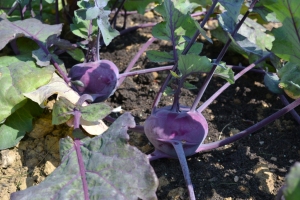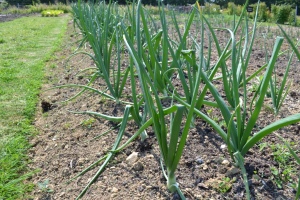A conversation at Hampton court reminded me of this the other day. It was one of those rambling taxonomy type discussions which I adore that are basically one person saying that a plant has changed its name and the other saying "yes I believe its ***** now". Then maybe a third person jumps in with an "Actually its called **** now!" This is recieved with a series of tuts, groans, annoyance, questions and then finally acceptance. Like a much less serious version of the "5 stages of Grief" more like a "5 stages of vauge irritation".
Anyway, the plant in question has always been a favourite of mine to grow from seed, so easy! It was called Coleus now its called Solenostemon.... no, wait.... now its called Plectranthus!
"What! Oh for gods sake! well IM still calling it Coleus!" ....said in a loud huffy voice
Its true, some Coleus are were included in the solenostemon classification but the ones we mostly think of are currently classified as Plectranthus now (and hopefully will stay that way!) In fact there is only one plant currently still classed as Solenostemon and thats Solenostemon sylvatica (name accepted as of 18/4/2012) which has in the past been called....
Synonym(s) Homotypic
These pics, above, were taken whilst the Genus was still classified as Solenostemon.... just!
Anyway! Back to Coleus... No, Plectranthus!
The one most people think of with Coleus is Coleus blumei (Plectranthus scutellarioides) This is the one with the amazing coloured foliage, sometimes having deeply indented leaves, it can in fact grow to be a small shrub (2Metres) but is thought of in the UK as being either a bedding plant or sometimes a house plant. Native to south east Asia and Malaysia it prefers dappled shade and temperatures around an average of 27 °C (80.6 °F) but will withstand temps as low as 12 °C, although theyre REALLY not happy about it!
To me, they're a plant of my childhood and later I grew them to decorate the bench in the Alitex at Ryton. They'd kind of fallen out of fashion at that point but I'm convinced they're making a comeback! (Crosses fingers)
Light levels are a predetermining factor for leaf colour, higher light levels will give greater colour saturation. The coloured parts of the leaves have high levels of anthocyanins, water-soluble, flavonoid biosynthetic pigments, these give the reds,oranges & purple colourations. The more anthocyanins present the lower the levels of clorophyll (The chemical that turns leaves green).
They like a lot of water! Don't allow them to dry out, they wilt quickly and it stresses them leaving them susceptible to powdery mildew and encouraging production of flowers. Which although pretty in their own right are not what you want from this plant. Pinch out flower buds to encourage production of new leaves. Seed production of named varieties is difficult as they are so prolific (much like Aquilega's) it tends to come instead from vegetative propagation, easy enough with this plant. As a beginner though seeds are always fun as theres an element of surprise!
Sow on the surface, as the tiny seeds need the light to germinate and keep moist by using either a glass sheet over or clingfilm is a good substitute.
As an aside (and not a reccomendation in any way!) they are known to contain Psychoactive substances and have been used as hallucinogenics. This has not been studied by science though and I DO NOT suggest you try this out.
I was lucky enough to enjoy a tour, by me old mukka from Ryton, Vicki Cooke who I worked at Ryton with (I owe her a veg garden blog!) love that woman... in a purely platonic way of course, of the glasshouses at Hampton Court, where they hold a large collection of Plectranthus and thats where the pictures in this blog post have come from. I've tried to keep this one simple in many ways as it would be very tempting to waffle on about the importance of Nomenclature (I've covered that subject admirably before) and breeding (I dont know enough to tell you confidently). I would however highly recommend growing these delightful, rewarding plants.
Just for fun!
Disclaimer: My idea of fun may vary greatly from your idea of fun
Heres a few of the now defunct synonyms you may still be using for plectranthus....
- Calchas acuminatus (Benth.) P.V.Heath
- Calchas atropurpureus (Benth.) P.V.Heath
- Calchas crispipilus (Merr.) P.V.Heath
- Calchas scutellarioides (L.) P.V.Heath
- Coleus acuminatus Benth.
- Coleus atropurpureus Benth.
- Coleus blancoi Benth.
- Coleus blumei Benth.
- Coleus crispipilus (Merr.) Merr.
- Coleus formosanus Hayata
- Coleus gaudichaudii Briq.
- Coleus gibbsiae S.Moore
- Coleus grandifolius Benth.
- Coleus grandifolius Blanco nom. illeg.
- Coleus hybridus Cobeau
- Coleus × hybridus Voss
- Coleus igolotorum Briq.
- Coleus ingratus (Blume) Benth.
- Coleus integrifolius Elmer
- Coleus laciniatus (Blume) Benth.
- Coleus multiflorus Benth.
- Coleus pubescens Merr.
- Coleus pumilus Blanco
- Coleus rehneltianus A.Berger
- Coleus savannicola K.Schum.
- Coleus scutellarioides (L.) Benth.
- Coleus secundiflorus Benth.
- Coleus verschaffeltii Lem.
- Coleus zschokkei Merr.
- Germanea nudiflora Poir.
- Majana acuminata (Benth.) Kuntze
- Majana blancoi (Benth.) Kuntze
- Majana grandifolia (Benth.) Kuntze
- Majana multiflora (Benth.) Kuntze
- Majana pumila (Blanco) Kuntze
- Majana scutellariodes (L.) Kuntze
- Majana secundiflora (Benth.) Kuntze
- Ocimum peltatum Schweigg. ex Schrank
- Ocimum scutellarioides L.
- Perilla nankinensis Wender.
- Plectranthus aromaticus Roxb.
- Plectranthus blumei (Benth.) Launert
- Plectranthus ingratus Blume
- Plectranthus laciniatus Blume
- Plectranthus nudiflorus (Poir.) Willd.
- Plectranthus scutellarioides Blume nom. illeg.
- Solenostemon blumei (Benth.) M.Gómez
- Solenostemon scutellarioides (L.) Codd
the plant list.org


































































































